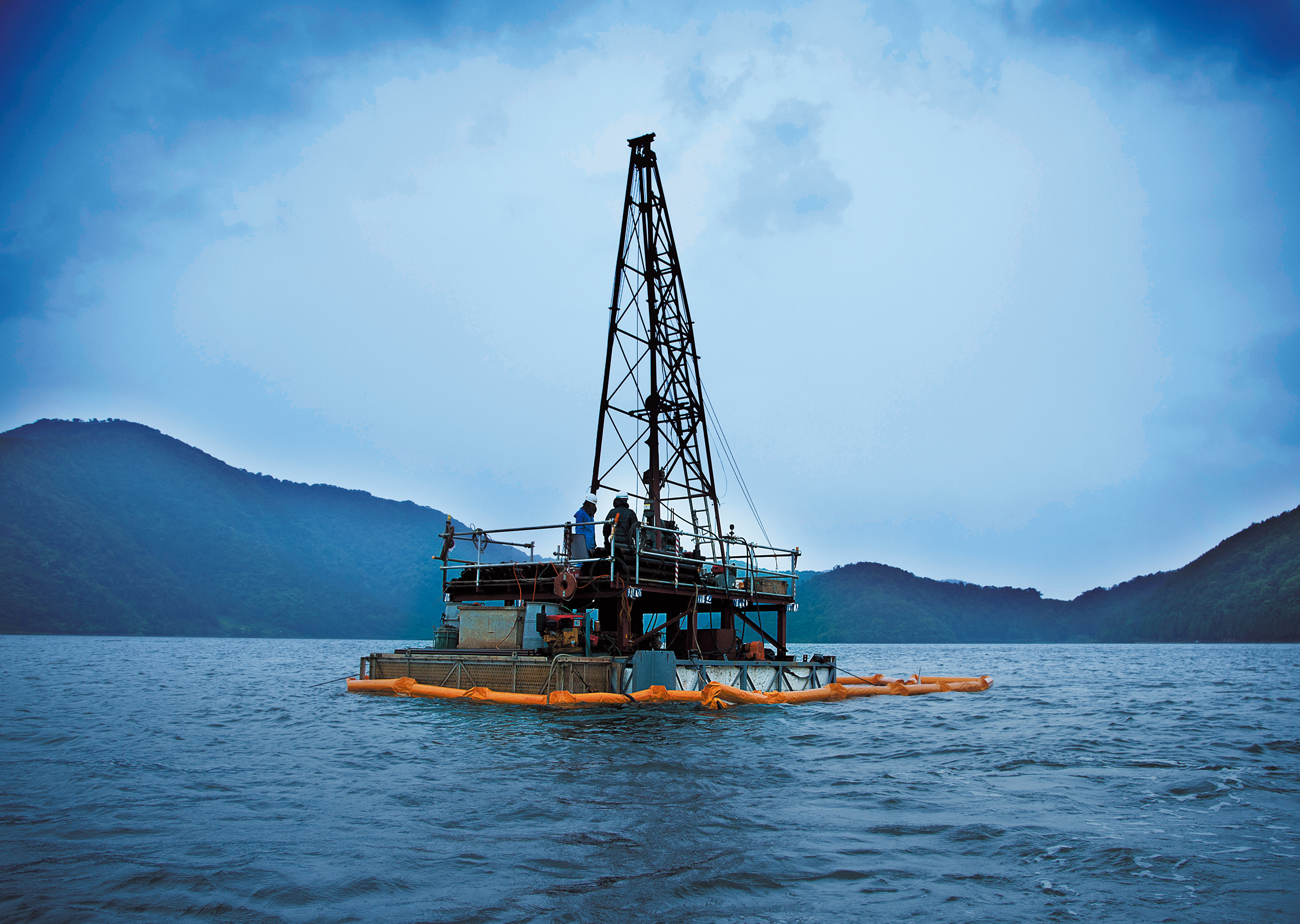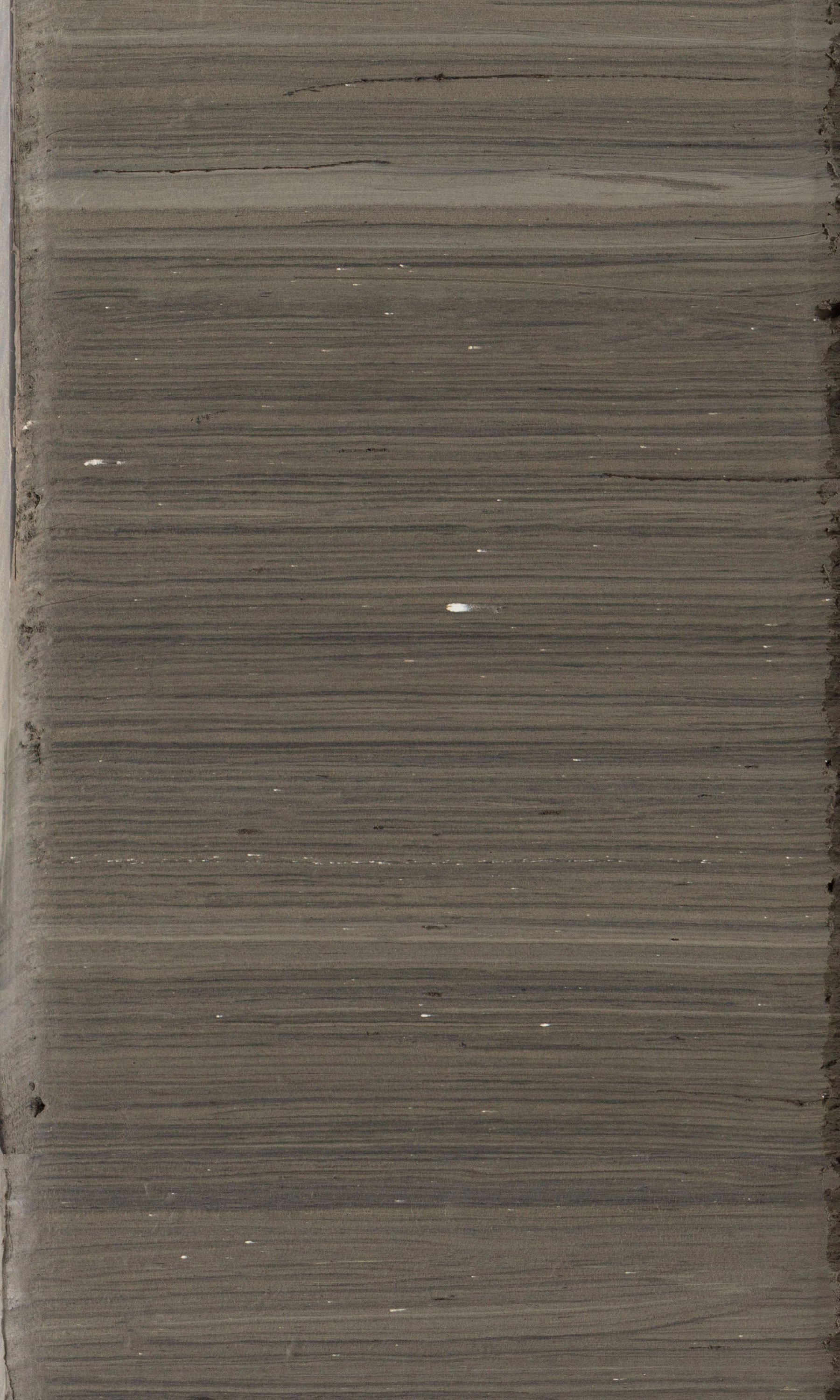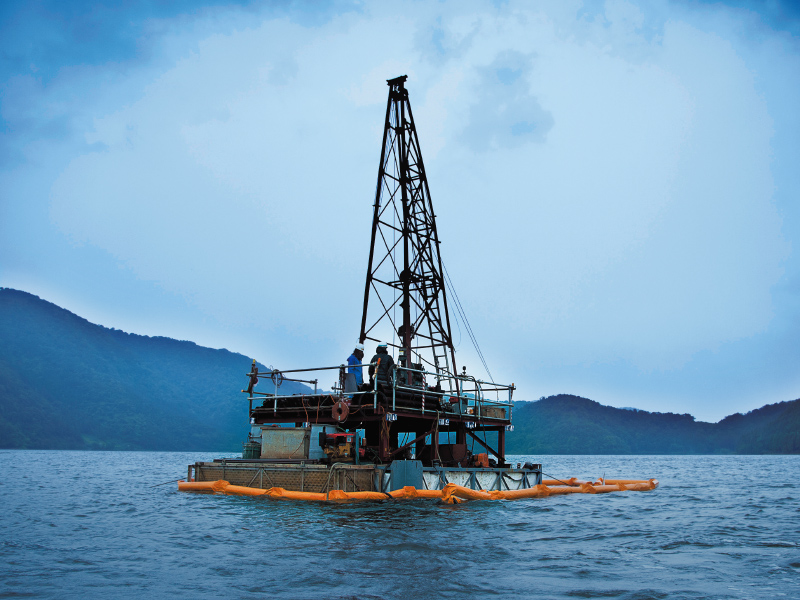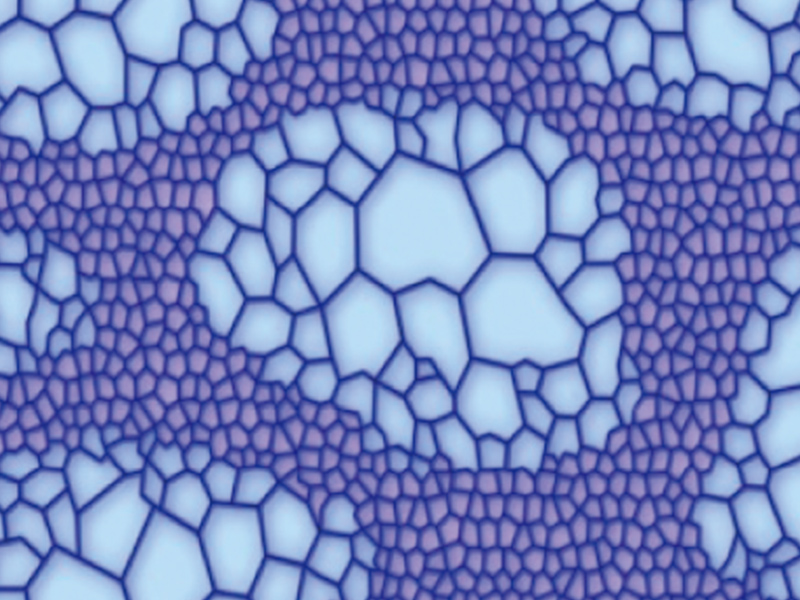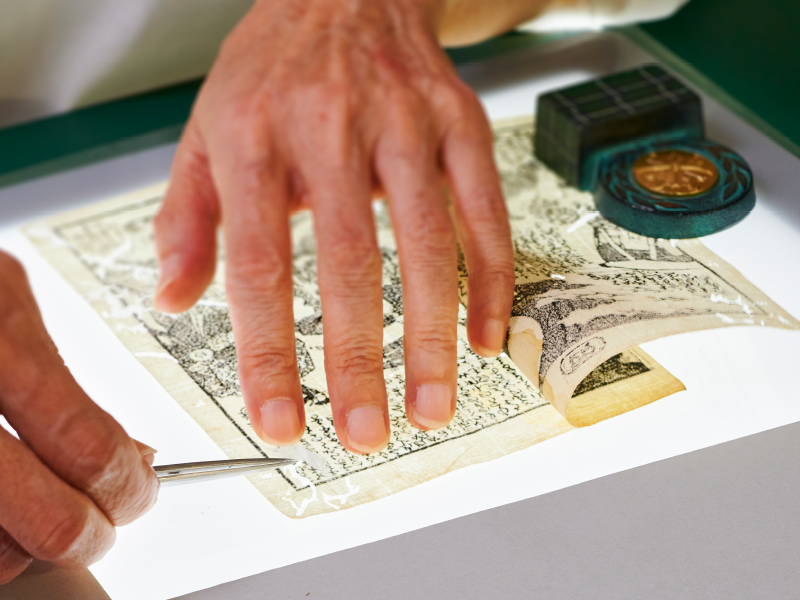STORY #1
Counting 70,000 Layers
of Lacustrine Sediment to
Obtain a Calibration Curve
for Radiocarbon Dating
Takeshi Nakagawa
Professor, Research Organization of Science and Technology,
Director of Research Centre for Palaeoclimatology
Have you ever imagined reading a book with seventy thousand pages, counting the pages one by one, transcribing all its contents into your notebook, and analyzing them to figure out what information the author really intended to convey? If you have, you might have been overwhelmed by the thought of how much work would be involved in this process. But this is what a multinational team led by Takeshi Nakagawa accomplished with regards to varved (annually laminated) lake deposits beneath Lake Suigetsu in 2012. Twenty one years had passed since the varves had first been discovered by global paleoclimatology researchers. Nakagawa, who has studied these varves for the last twenty years now, remembers this story shared by him and his predecessors: that of defiant researchers who deciphered a masterpiece written by nature.
Nakagawa’s story reached a climax on October 18, 2012, when the American Association for the Advancement of Science (AAAS) gave a press conference at the Ministry of Education, Culture, Sports, Science and Technology in Tokyo. “It was rare for AAAS to hold such a press conference for a specific research outcome.” Nakagawa recalls. “They sent their representatives from Washington D.C., had them set up the conference hall, and give out documents to Japanese journalists.”
At the press conference, Nakagawa and his team presented their work, which was about to be published in Science on October 19, 2012, the day after the conference. Till then, precise age could be acquired only for the last 12,450 years using the annual tree rings as references. Nakagawa’s team had established reliable chronology for ca. 10,000 to 50,000 years ago by counting varves they excavated from the bottom of Lake Suigetsu. The team had also determined the ages of the varves by combining their new data with the carbon 14 dating of leaf fragments embedded in the mud sediments.
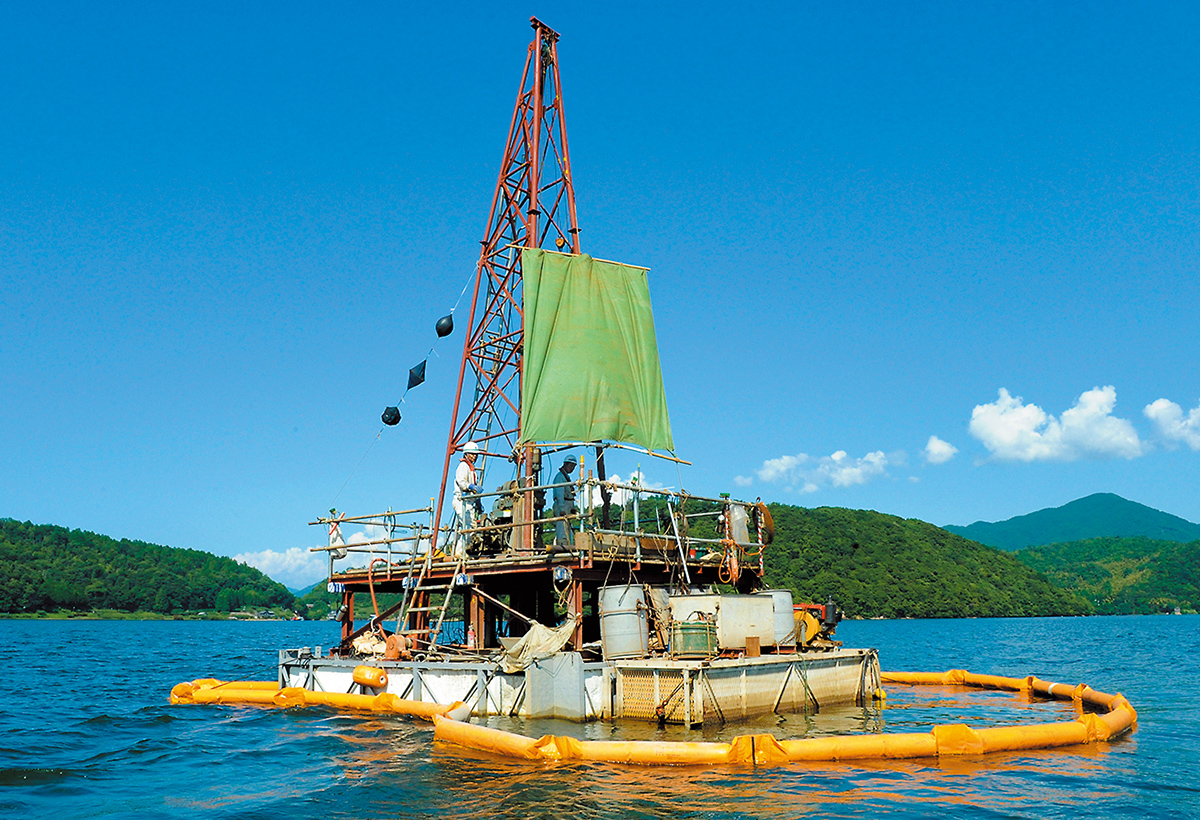
Kazuma Yamane
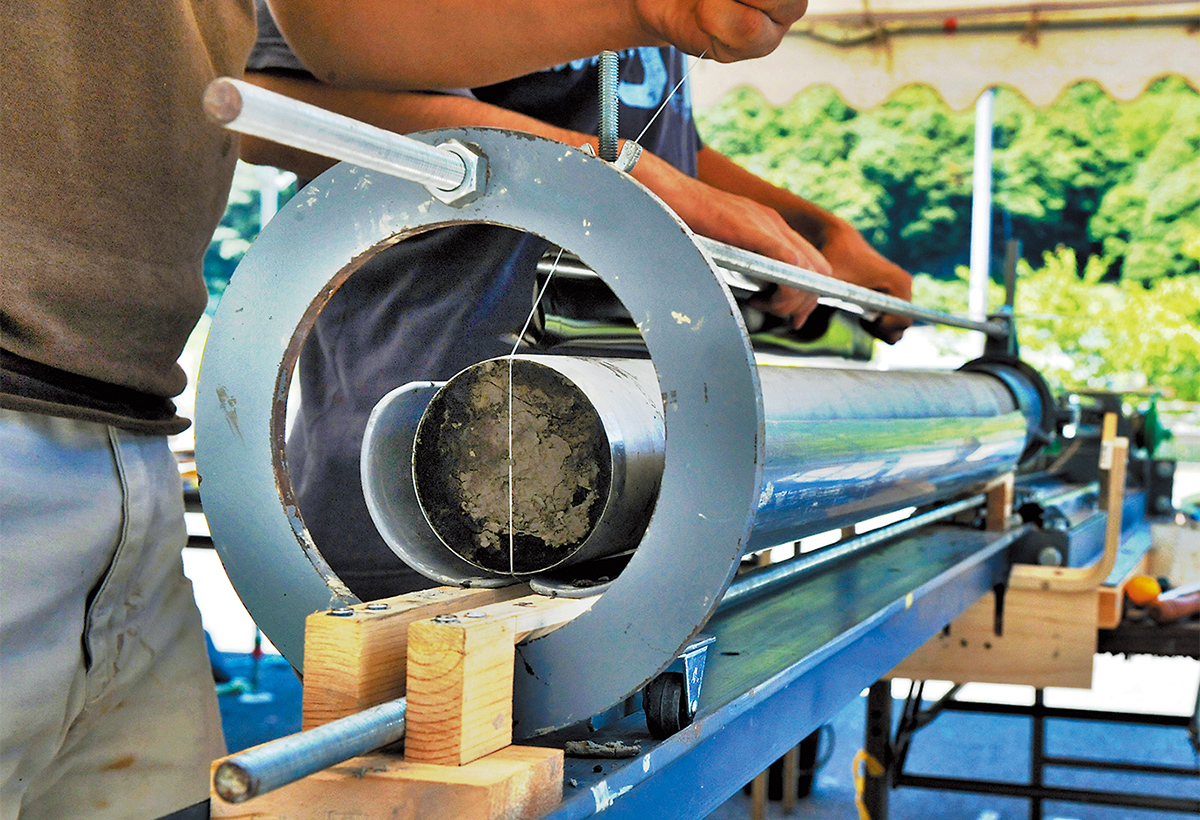
Kazuma Yamane
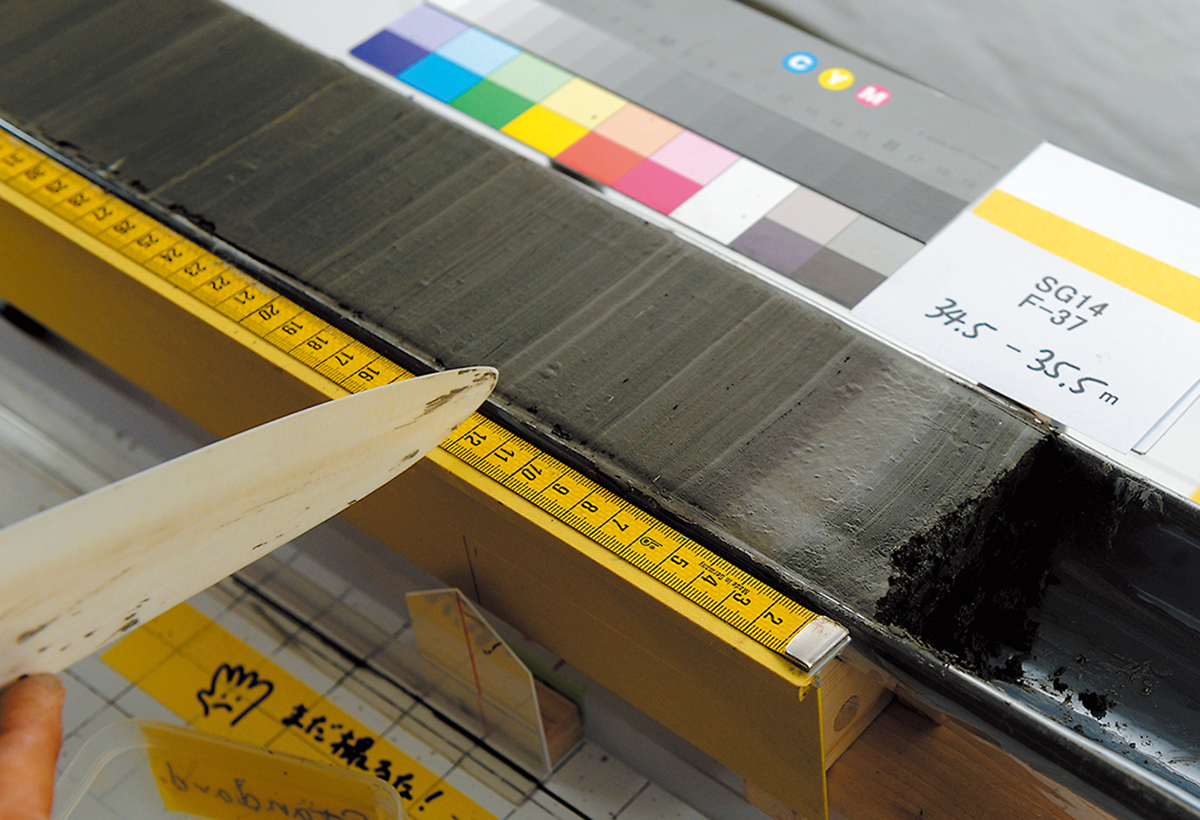
Kazuma Yamane
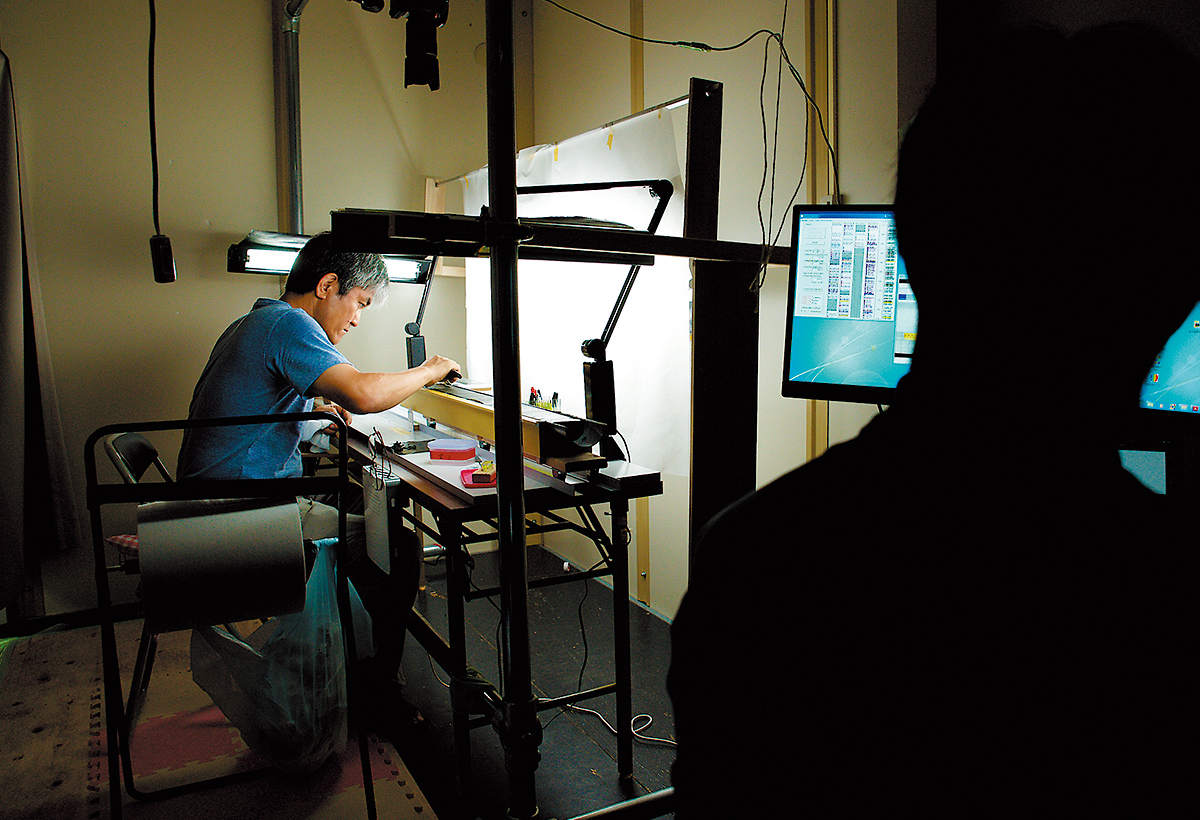
Mitsuru Mizutani
A long drill is lowered from a ship to dig at the bottom of the lake and extract sediment in a column. This is a method that was uniquely developed by Nakagawa. The sediment inside the tube is cut into two to reveal the sections of varves, by a method that was developed by Nakagawa.
Determining the age of ancient objects is not an easy task. Generally, objects excavated from lower layers are older than those found in upper layers of sediment if no earthquakes or other crustal deformation events have disturbed the order of layers. Although this principle is simple, how many years ago the sedimentation took place always remains to be measured.
As long as objects contain organic material and are younger than approximately fifty thousand years, there is a chance of their ages being determined via carbon 14 dating. Carbon 14 is an isotope of carbon that is unstable and weakly radioactive. Carbon in organic material has stable isotopes: carbon 12 and carbon 13, which are slightly lighter than carbon 14. Since carbon 14 is a radioactive isotope, it slowly decays and is reduced by half in 5730 years; it becomes almost undetectable in about fifty thousand years. Organic lifeforms, including plants and animals, contain carbon 14 in the form of carbon dioxide; plants accumulate carbon 14 through photosynthesis and animals, by eating plants. Both, however, stop taking it in as soon as they die. In other words, if researchers could measure how much carbon 14 is left undecayed in a sample, they could calculate how many years ago the lifeform contained in the sample died.
“The carbon 14 dating method is widely prevalent in archaeology today,” Nakagawa explains. “However, since its early stage of development in the 1960s, researchers have recognized that a number of conditions had to be fulfilled to prove that the determined ages were really accurate.” The issue was that the proportion of carbon 14 in the atmosphere might not have been constant over the past fifty thousand years. “That was why researchers worldwide scrambled to find an older organic material whose age has been determined with other methods, to the extent possible, and measure its radioactive carbon content. For the varve in Lake Suigetsu, our team could obtain hundreds of terrestrial leaf fossils and several reliable methods to determine their ages without resorting to carbon dating,” Nakagawa continues.

The survey of the varves in Lake Suigetsu was started in 1991 by Dr. Yoshinori Yasuda, who later became Nakagawa’s supervisor and is currently Professor Emeritus of the International Research Center for Japanese Studies. Dr. Yoshinori Yasuda first conducted a drilling of Lake Mikata, a lake adjacent to Lake Suigetsu, and collected layers of mud which had light and dark striped patterns. He then conducted an experimental survey of Lake Suigetsu later in the same year, hoping to retrieve better varves since Lake Suigetsu has no river flowing into it and the lake bed remained unaffected by water flow. He was rewarded by 15 m of serial varves. Two years later, he conducted a full drilling and successfully obtained another serial varve more than 45 m thick.
“Because Japan has a temperate humid climate, the changes in season lead to definite differences in sediment types,” describes Nakagawa. “In spring, single-cell algae called diatoms flourish in water. Their lifespan is very short. They die in late spring and their corpses go down and settle on the lake bottom. After spring, we have the rainy season which sometimes causes soil erosion and creates a slightly coarser layer on the diatom layer. In summer, huskless phytoplankton grow and die in the water to leave a layer of black organic substance. Another kind of diatom appears in autumn, followed by iron carbonate precipitation under cold winter water with enhanced carbonate and ferrous ions. This recurring seasonal layering increases sediment thickness by 0.6-0.7 mm per year, resulting in more than 45 meters of lakebed deposit in Lake Suigetsu.”
But how could Lake Suigetsu even hold sediment of this thickness? Nakagawa emphasizes two characteristics that make Lake Suigetsu truly special: “The first one is water depth. Lake Suigetsu is about 34 meters deep, which causes anoxia in the deep water and lake bed. Thus, deep water fish and benthic animals that might disturb the sediment layer cannot live in Lake Suigetsu. The second is a geologic fault located about two kilometers away from the center of Lake Suigetsu. Due to this fault, the lake bed of Lake Suigetsu is depressing. The speed of this subsidence is slightly higher than that of underwater sedimentation, which prevents Lake Suigetsu from being reclaimed.”
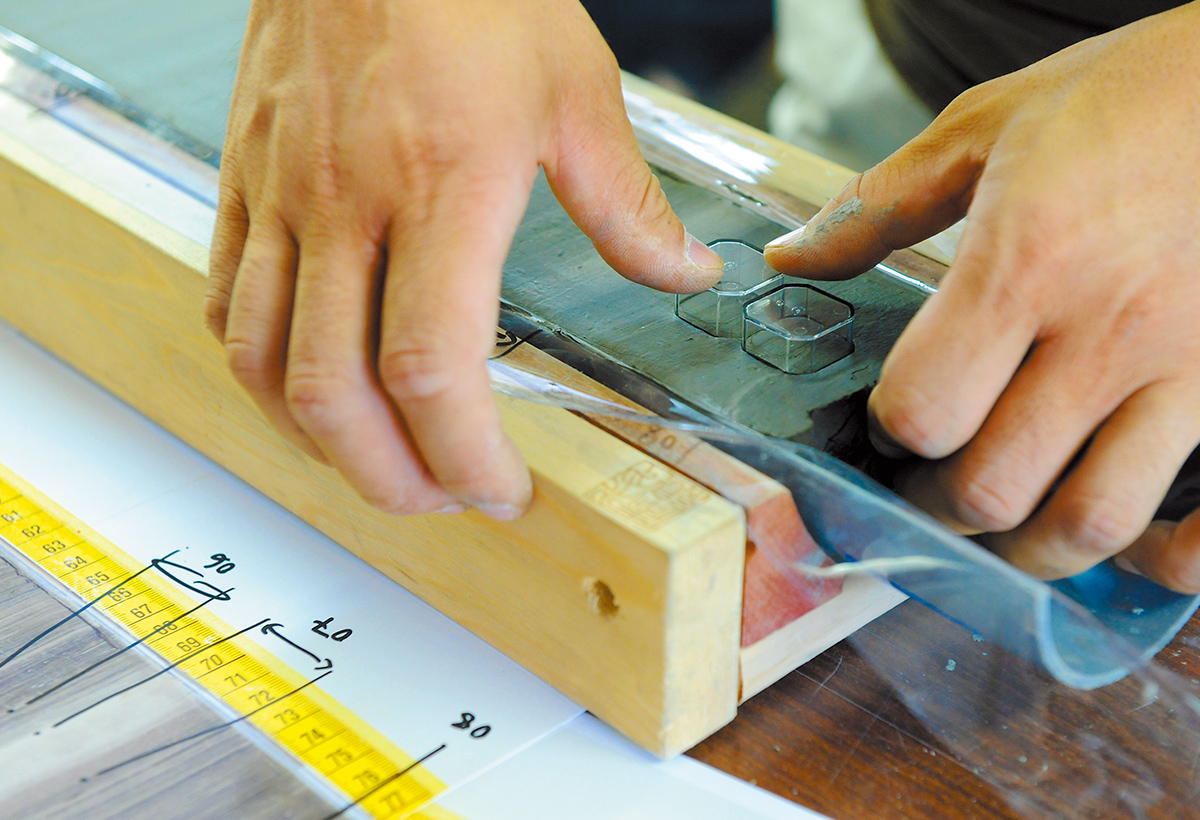
Kazuma Yamane
Varve
A layer that corresponds to one calendar year is formed as a set of whitish and blackish seasonal layers. The thickness of one annual layer is 0.6 or 0.7mm. Irregular stripes represent natural disasters such as earthquakes, eruptions or flooding. By studying the radioactive carbon, pollen and many other microscopic objects included in the layer of each year in detail, researchers can obtain a wide range of information, such as ancient climate and temperature fluctuations.
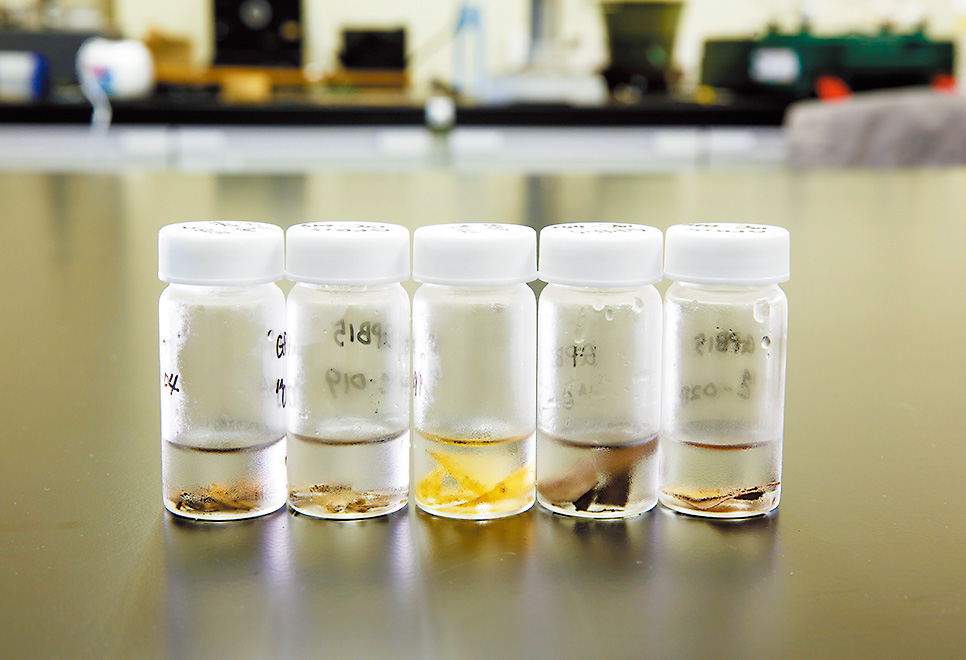
Radioactive elements
Plants take in a radioactive isotope of carbon (14C) contained in the atmospheric carbon dioxide, and when they die, the amount of 14C contained in plant’s body starts decreasing. By measuring the amount of remaining 14C, the age of plant fossils can be determined.
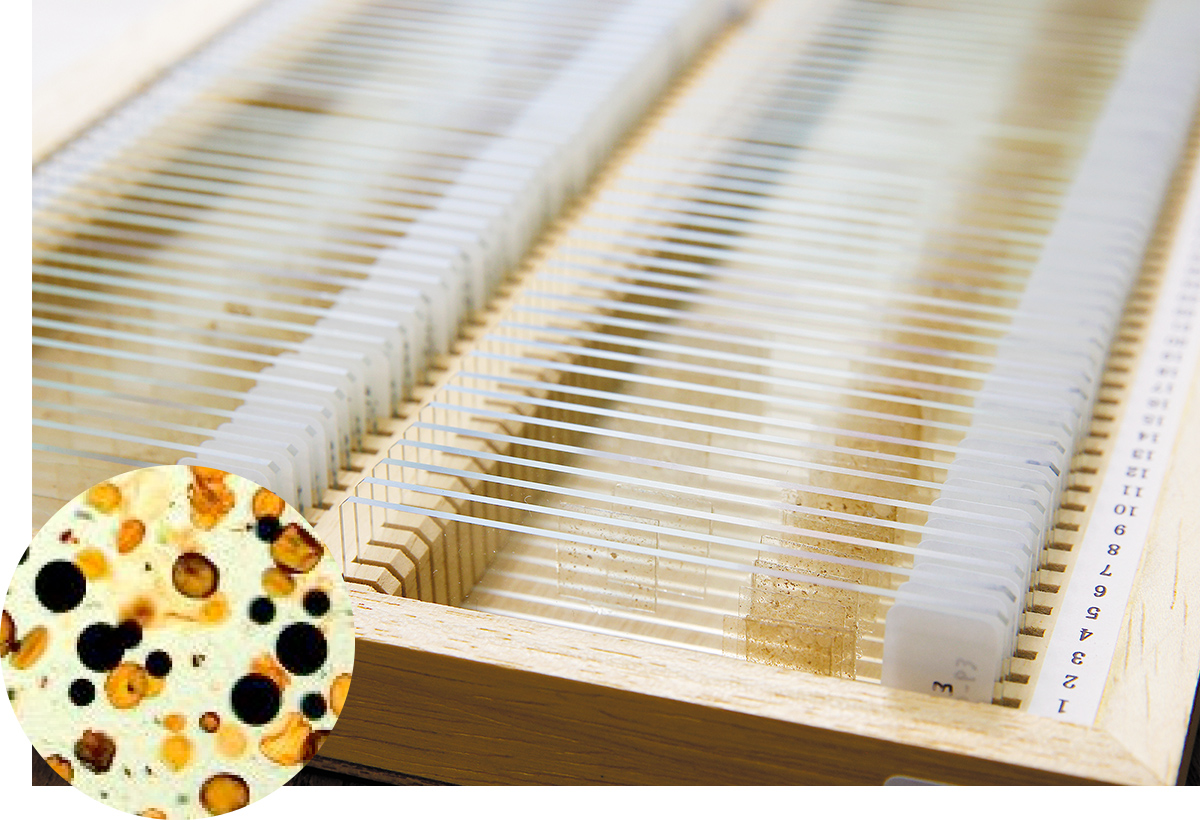
Pollen
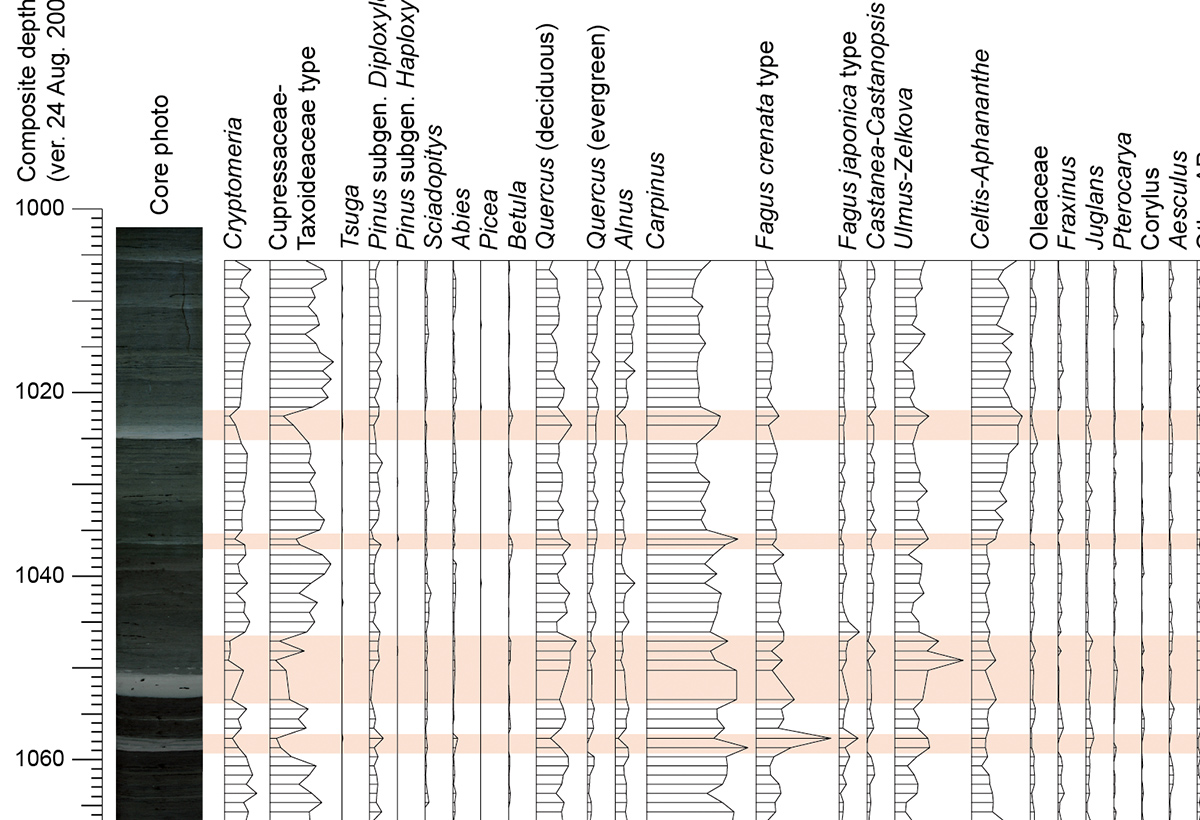
A graph (partial) showing the amounts of different types of pollen contained in individual varves. By checking the increase and decrease of the amounts of pollen, researchers can obtain data pertaining to temperature changes.
In 1993, soon after the drilling core was retrieved by Dr. Yasuda, a young researcher began to count the number of layers in it to determine how many years ago the layer had been created. This researcher was Dr. Hiroyuki Kitagawa, then Dr. Yasuda’s assistant and Nakagawa’s senior at the International Research Center for Japanese Studies. Back then, tree rings were used to calibrate radiocarbon dates to calendar years, and the dataset used in the calibration covered about eleven thousand years in the past. Therefore, Dr. Kitagawa had to prepare a dataset beginning eleven thousand years ago and going back to fifty thousand years ago; that is, he had to count almost forty thousand layers and measure the amount of carbon 14 in all the fragments of leaves, which had become fragile over thousands of years.
“Dr. Kitagawa completed this grand project almost all by himself,” Nakagawa says, admiring Dr. Kitagawa’s accomplishment. “His paper was published in Science in 1998 and welcomed with applause. In the US, another researcher, Dr. Konrad Hughen conducted a similar project on marine sediment retrieved from the anoxic Cariaco Basin located off the north central coast of Venezuela. Dr. Hughen’s paper was published in Nature at a similar time. A group of scientists based in different parts of the world were independently working towards the same goal: creating a more accurate global standard age scale dataset for obtaining a better carbon 14 calibration curve (IntCal).
Although Dr. Kitagawa’s counting and carbon isotope measurement were both correct, the drill cores he obtained from Lake Suigetsu lacked a few centimeters of sediment every meter. “Due to technical limitations, it is difficult even now to efficiently retrieve a core longer than a meter. We have to repeat drilling every meter to reach the bedrock underneath the sediment layers, and we lose layers from both edges of each core every time we drill through another meter. When I decided to re-drill the lake bed, I had to drill four cores, with the starting depths slightly offset from one another in order not to lose the same layer in the different cores,” remembers Nakagawa.
After careful re-drilling and six years of international research, Nakagawa and his team successfully retrieved seventy thousand layers, analyzed them, and finally finished constructing a new dataset based on the lacustrine sediment of Lake Suigetsu in 2012. Their rubrical work ultimately bore fruit in the same year when the IntCal group accepted their dataset for inclusion in the IntCal13 as a principal component. The Lake Suigetsu varve has become a world standard as indicator for carbon 14 dating.
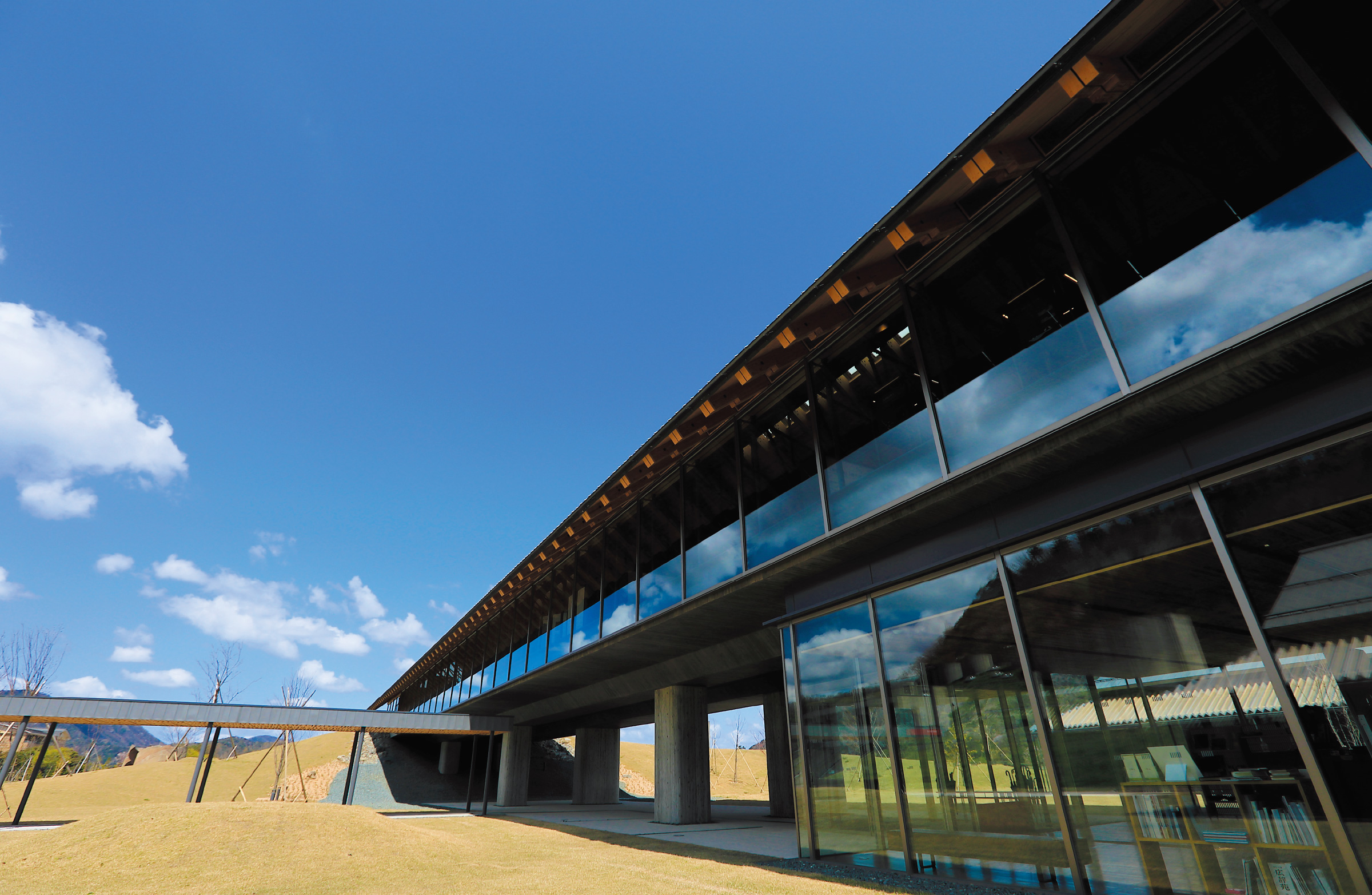
The world’s first museum of varves opened in Wakasa-cho, Fukui Prefecture. The varves in Lake Suigetsu are a global standard measure for age determination.
Sediments with varves piled up continuously in the lake bed for 70,000 years unravel mysteries of ancient history.
Following his success with the Lake Suigetsu varves and leaf fragments, Nakagawa is now analyzing ancient pollen collected from the sediments. “As a paleoclimatologist, I am interested in characterizing ancient environments from the type and number of pollen grains. Since we now have an accurate age scale, it might be possible to link historical events to changes in paleoclimates,” Nakagawa explains.
There is no doubt that more than one story still lies hidden in the seventy thousand pages of Lake Suigetsu’s chronicle, waiting to be revealed by Nakagawa and his team.
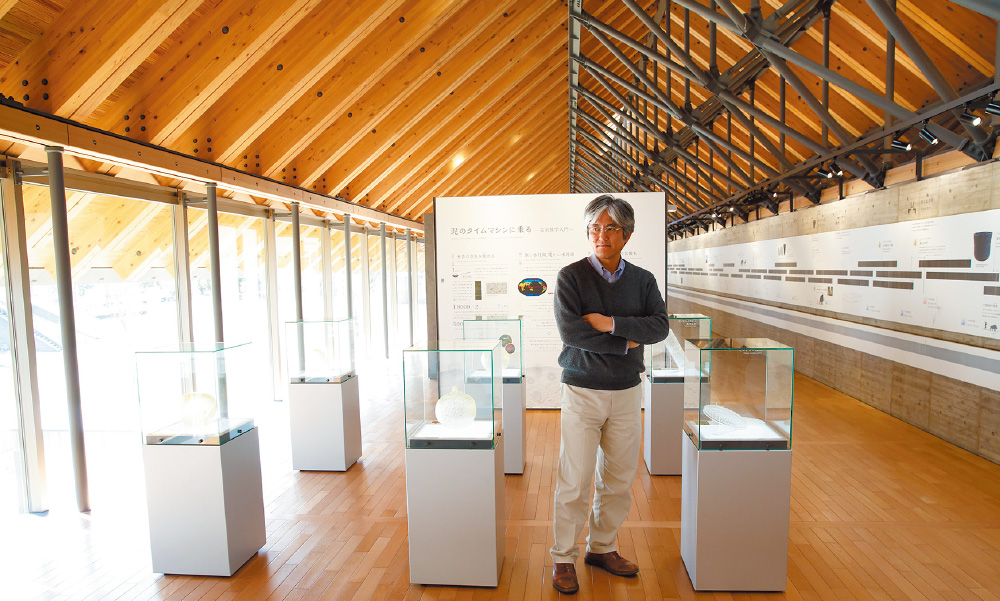

Varves give us clues not only of identifying the specific age of excavated articles, but of finding out what the ancient natural environment was like such as general climate, the appearance of forests in ancient time, etc. Examining the species and amount of pollen from the plants around the lake that are confined in the varves makes it possible to simulate what the appearance of the forest and general view around the lake were like in ancient time.
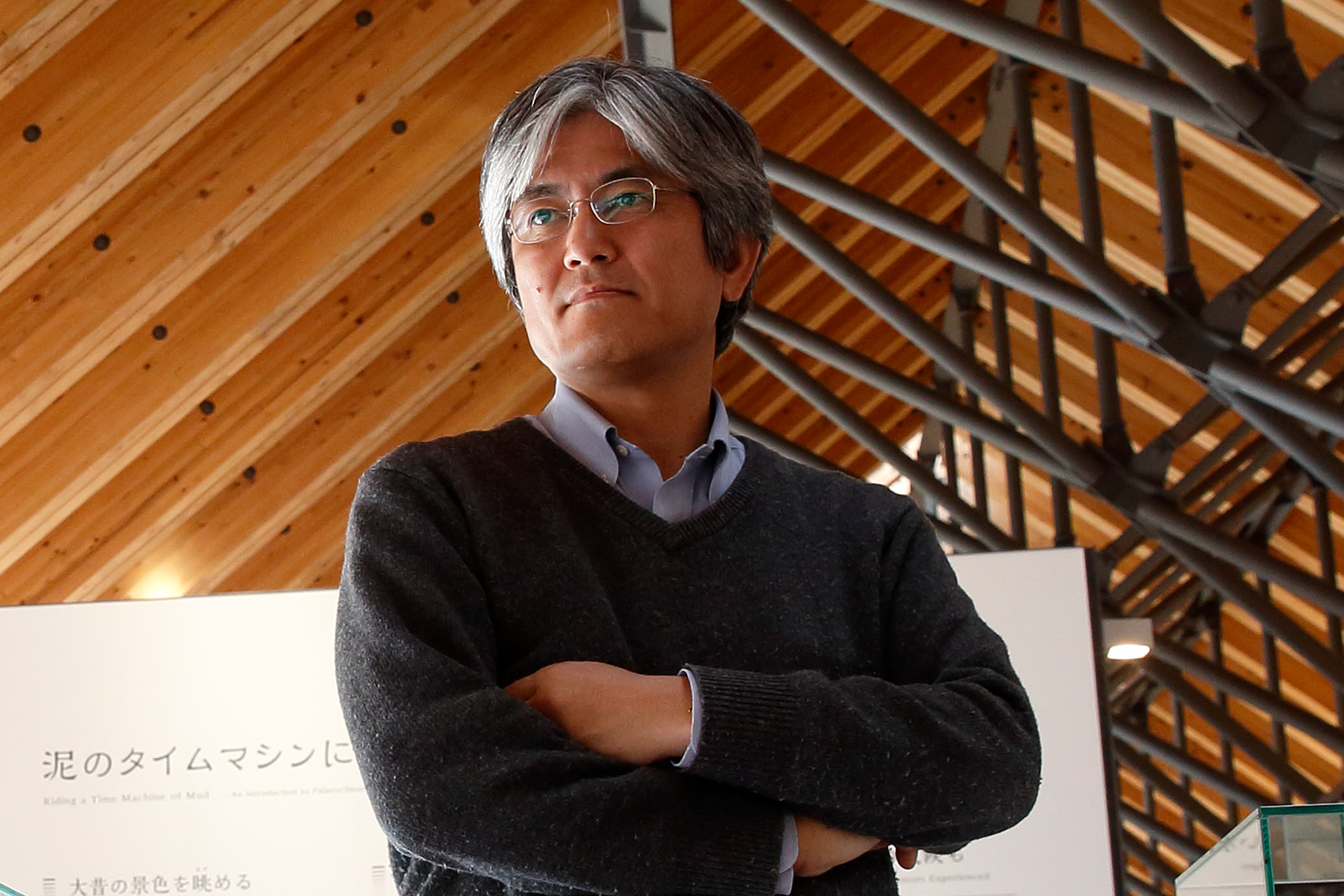
- Takeshi Nakagawa
- Professor, Research Organization of Science and Technology, Director of Research Centre for Palaeoclimatology
- Subject of Research: Climate reconstruction using varved sediments
- Research Keywords: Palaeoclimatology, Geochronology
*The interview for the article was conducted in April 2019.
